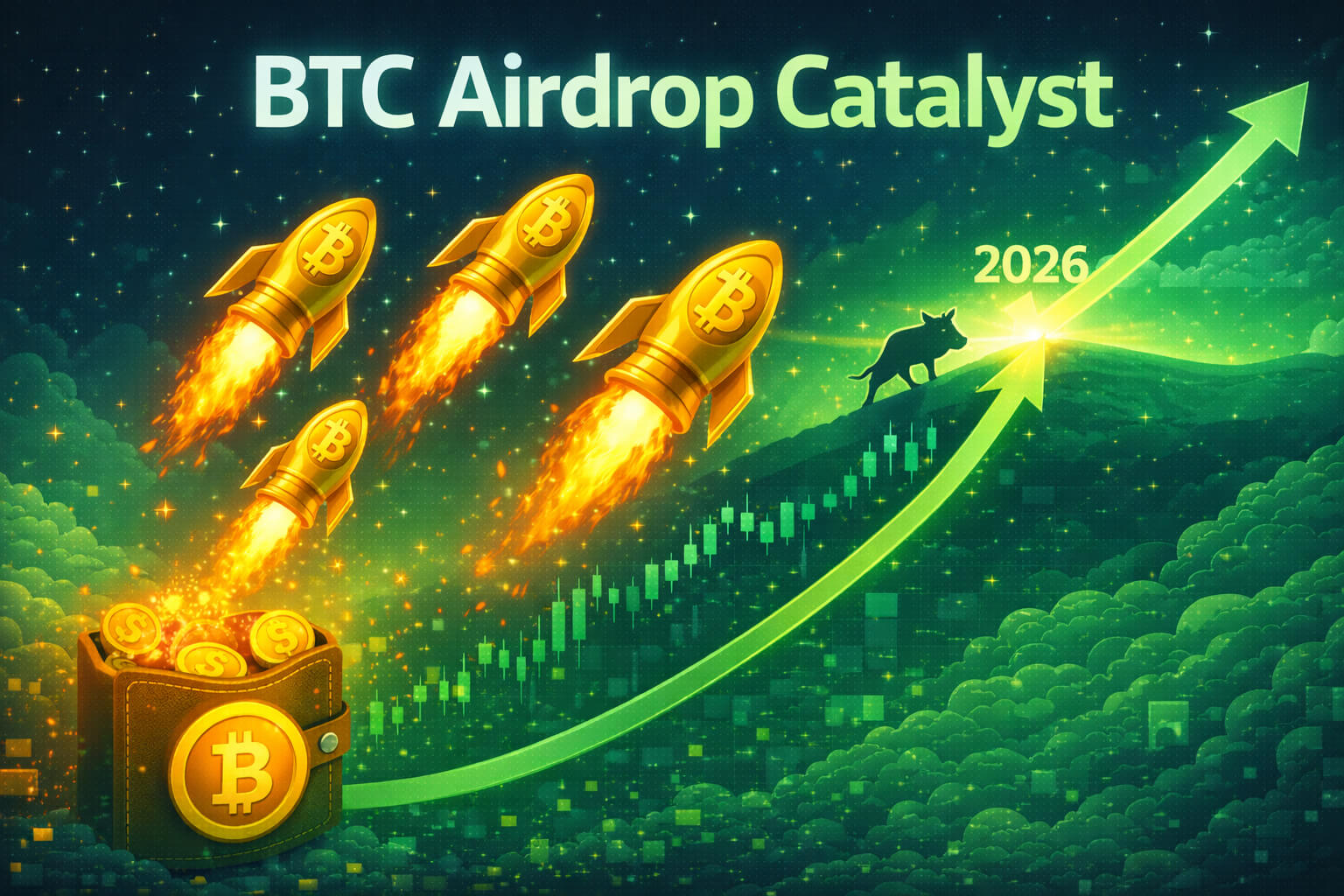In the world of cryptocurrency, tokenomics (token economics) is a critical factor that influences many aspects of a project, from its overall success to the way it engages users. Airdrops, a popular marketing and distribution tool, rely heavily on the underlying tokenomics of a project to determine how and when tokens are distributed. By understanding the impact of tokenomics on airdrop distribution models, projects can design more effective campaigns that align with their long-term goals and user engagement strategies.
This article delves into how various tokenomic factors such as supply, inflation, token utility, and governance affect the structure and execution of airdrops. We’ll also explore real-life examples of how projects have tailored their airdrop models to reflect their tokenomics.
1. What is Tokenomics?
Before we dive into airdrop distribution models, let’s understand what tokenomics actually entails. Tokenomics refers to the economic model behind a cryptocurrency token. It includes factors such as:
- Total Supply: The maximum number of tokens that will ever be created.
- Circulating Supply: The number of tokens currently in circulation.
- Inflation Rate: The rate at which new tokens are created or issued.
- Utility: The practical uses of the token within the ecosystem, such as staking, governance, or payments.
- Governance: The way decisions are made within the project, often involving token holders.
These aspects of tokenomics influence everything from user engagement to the sustainability of the project. When it comes to airdrops, tokenomics can determine how tokens are distributed, who receives them, and the conditions attached to these distributions.
2. How Token Supply Influences Airdrop Design
One of the most critical aspects of tokenomics that affects airdrop models is token supply. The total and circulating supply of tokens can dictate how many tokens a project is willing to airdrop, how frequently, and to whom.
Limited vs. High Supply Tokens
- Limited Supply: Projects with a capped supply are often more conservative with their airdrops. For example, Bitcoin has a fixed supply of 21 million, and Bitcoin-related airdrops are rare and valuable. For tokens with limited supply, airdrops may focus on rewarding long-term holders or those who contribute to the ecosystem.
- High Supply: Projects with a high token supply, like meme coins or inflationary tokens, may distribute larger quantities during airdrops to quickly grow their user base. High-supply tokens can afford more frequent and larger airdrops without impacting scarcity.
The token supply structure impacts the volume and frequency of airdrops, influencing how widely the token is spread within the crypto community.
3. The Role of Inflation in Airdrop Models
Inflation is another critical factor in airdrop distribution models. Projects with an inflationary token model continuously create new tokens, which allows them to offer more tokens over time. However, the risk with inflationary models is that too many tokens in circulation can dilute value.
Inflationary vs. Deflationary Models
- Inflationary Tokens: These projects use airdrops to introduce new tokens into circulation. For example, some decentralized finance (DeFi) projects distribute inflationary rewards through staking incentives, which function similarly to airdrops. This model works well for projects aiming to maintain user engagement by continually rewarding them with new tokens.
- Deflationary Tokens: In contrast, deflationary tokens decrease the total supply over time, either through token burns or limited issuance. For these projects, airdrops are usually rare and strategic, intended to create scarcity and enhance value for existing holders.
The choice between an inflationary or deflationary airdrop model can significantly impact user interest, token value, and the overall market perception of the project.

4. Token Utility and Airdrop Incentives
The utility of a token—or how it can be used within its ecosystem—also plays a significant role in designing airdrop campaigns. When tokens have a clear use case, airdrops can effectively introduce users to these functionalities, encouraging them to engage with the platform.
Types of Utility-Driven Airdrops
- Governance Tokens: Projects with governance tokens, like Uniswap’s UNI or Aave’s AAVE, use airdrops to reward users who participate in governance activities. These airdrops encourage users to vote on proposals, making the ecosystem more decentralized and community-driven.
- Staking Rewards: Tokens that offer staking rewards can airdrop tokens to encourage staking and increase network security. For instance, projects on Proof-of-Stake (PoS) blockchains often reward early adopters with staking tokens, fostering network growth and engagement.
- Platform Incentives: Some tokens are used for transaction fees, lending, or as payment methods within their platforms. Airdrops for these tokens incentivize users to try platform services, which could result in higher adoption rates.
When a token has a strong utility, airdrops serve as a tool to familiarize users with its use cases, increasing engagement and adoption.
5. Governance Models and Community Airdrops
In decentralized ecosystems, governance plays a vital role in shaping airdrop distribution models. Projects with governance tokens often use airdrops to reward users who participate in decision-making processes or hold tokens for extended periods.
Examples of Governance-Based Airdrops
- Compound (COMP): Compound launched a governance airdrop for users who had interacted with its protocol. The aim was to reward early adopters and incentivize further participation in governance.
- Uniswap (UNI): Uniswap’s airdrop rewarded users who had previously interacted with the platform, thus giving governance power to early adopters. This approach strengthened Uniswap’s community by aligning incentives with long-term participation.
Governance-driven airdrops help decentralize control by distributing tokens to active community members, creating a sense of ownership and responsibility.
6. Balancing Scarcity and Accessibility in Airdrop Distribution
Tokenomics also influences the balance between scarcity and accessibility in airdrop models. Projects must carefully consider how accessible they want their token to be, without compromising scarcity, which often drives value.
Strategic Airdrop Distribution Models
- Exclusive Airdrops: For projects focused on scarcity, exclusive airdrops can be highly effective. By limiting the airdrop to early adopters or specific community members, projects create a sense of exclusivity. This approach often boosts token demand, as recipients feel privileged to hold a scarce asset.
- Mass Airdrops: On the other hand, mass airdrops are more inclusive and aim to attract a broad audience. Projects with high token supply and inflationary models can afford to conduct mass airdrops, introducing the token to as many people as possible to foster rapid growth.
Balancing scarcity and accessibility in airdrop models can influence how tokens are perceived and how widely they are adopted.
7. Case Studies: Successful Airdrop Campaigns Driven by Tokenomics
Examining real-life examples can highlight how tokenomics shapes airdrop distribution. Here are a few notable case studies:
- Aavegotchi (GHST): Aavegotchi airdropped tokens based on user engagement and staking activity. By targeting active participants, they created a loyal community and showcased their token’s utility within the game.
- 1inch Exchange: 1inch targeted users who provided liquidity or used their platform regularly, rewarding them with 1INCH tokens. This airdrop incentivized frequent platform usage, reflecting a well-designed tokenomics model that values active user participation.
These case studies show that aligning airdrop models with tokenomics can drive engagement and strengthen the project’s community.
Conclusion: Designing Effective Airdrop Models with Tokenomics in Mind
The impact of tokenomics on airdrop distribution models cannot be understated. By aligning airdrop strategies with tokenomics, projects can effectively distribute tokens, attract users, and create sustainable growth. Understanding factors like supply, inflation, utility, and governance allows projects to design airdrops that resonate with their audience and encourage long-term engagement.
In the fast-evolving world of cryptocurrency, the projects that succeed will be those that use tokenomics as a guiding principle for all aspects of their ecosystem including airdrop distribution. As the crypto space matures, expect to see even more sophisticated and tokenomics driven airdrop campaigns that balance user acquisition, community engagement, and token value.
For more insights on designing effective crypto distribution models, explore our Crypto Airdrop Guides.
Stay Updated
Stay informed on the latest strategies in tokenomics and airdrop distribution by following us on:
Special Offer
Looking to participate in innovative airdrop campaigns? Sign up on Bybit to discover new opportunities and earn rewards!

















